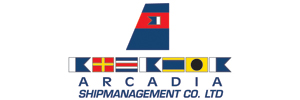The global shore power market is projected to significantly grow, forecasting a value of $10.3 billion by 2034.
According to analysis by Exactitude Consultancy, shore power, with its current market value estimated at approximately $4.2 billion in 2024, is projected to strongly expand anticipating a market value of around $10.3 billion by 2034.
This growth reflects a Compound Annual Growth Rate (CAGR) of about 9.2% over the forecast period from 2025 to 2034.
Key trends driving this market include increasing environmental regulations aimed at reducing emissions from ships while docked, along with growing demand for sustainable energy solutions. Exactitude Consultancy highlights that major ports around the world are now investing in shore power infrastructure to comply with these regulatory requirements and enhance the appeal of their operations.
Furthermore, technological advancements in electrical systems are accelerating the adoption of shore power particularly among shipping and cargo transport companies.
However, the market faces challenges related to the high initial capital investment required for infrastructure development and varying levels of adoption across different regions. The integration of renewable energy sources and government incentives may help offset these challenges, creating a supportive environment for growth.
Shore power systems dominate the market, largely due to the increasing number of environmental regulations requiring lower emissions from ships while docked. These systems currently account for the largest market share, with estimates suggesting they represent around 70% of the total market.
As the global maritime industry continues to recover from pandemic-related setbacks, investment in shore power for various vessel types is expected to rise. Container ships and Ro-Ro vessels show significant growth potential, though at a slower pace than cruise ships. The fishing vessel segment is smaller but gradually increasing due to mounting regulatory pressure.
Furthermore, ports and terminals form the leading end-user segment. The global push for more sustainable operations has led many port authorities to widely adopt shore power solutions, with this category capturing roughly 40% of the market share.
Shipping companies are also key players, investing in shore power infrastructure to comply with stringent environmental regulations. Governments and regulatory agencies play a crucial role in the ecosystem, often driving the adoption of shore power through legislation and financial incentives.



























































